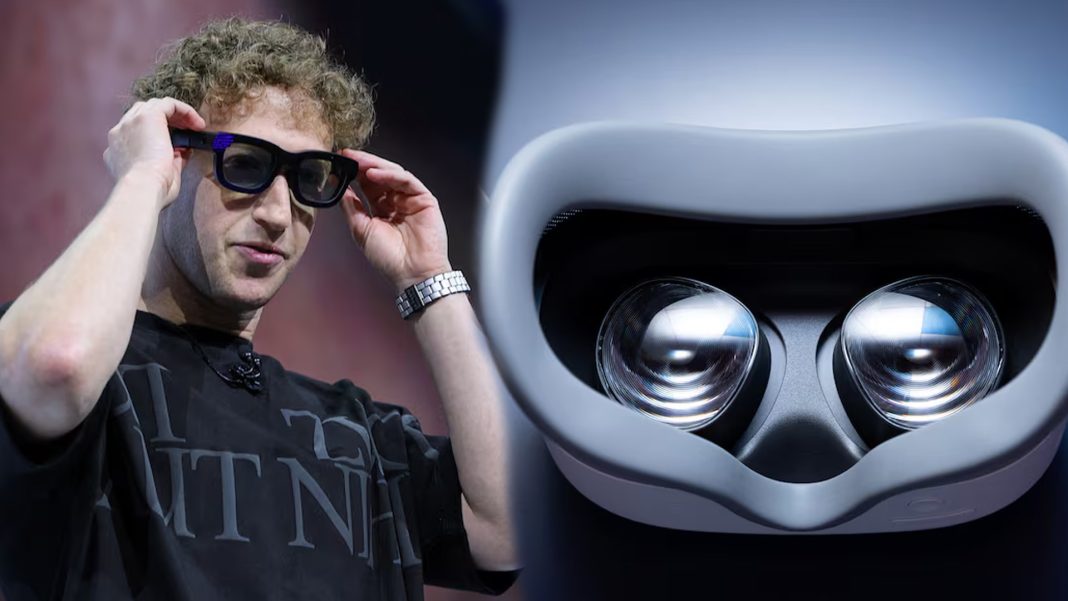Meta Unveils Orion: AR Glasses Prototype at Connect
Chief Executive Mark Zuckerberg said, “This is the physical world with holograms overlaid on,” as he dramatically removed the hefty black Orion spectacles from a metal case presented to him on stage.
Meta’s particularly customized silicon powers the Orion glasses, which are made of a magnesium alloy. Users will be able to communicate with the Orion eyewear via a wrist-based neural interface and hand-tracking voice controls.
According to Zuckerberg, Orion is a “dev kit,” and Meta plans to work on making it more small, streamlined, and cost-effective for clients in the future. On Wednesday afternoon, the company’s shares increased by over 2%.
Advancements in AR Technology
In addition, Meta disclosed a number of software improvements to the AI assistant, which have increased demand for the Ray-Ban Meta smart glasses by allowing users to scan QR codes and play music from Spotify when asked.
In addition, Zuckerberg demonstrated real-time language translation between English and French, Italian, and Spanish. The company also intends to introduce video capabilities later this year.
The owner of Facebook boosted his bet on artificial intelligence as the company launched the Connect event by announcing a plethora of new products for its ChatGPT-like chatbot and promising to start automatically putting customized photographs created by the bot into users’ Instagram and Facebook feeds.
Meta also announced the Quest 3S, its latest entry-level model in their Quest series of mixed-reality headsets.
One of the AI upgrades that was revealed was an audio enhancement for the digital assistant named Meta AI. This update allows the assistant to react to voice instructions and gives users the choice to have the assistant sound like Judi Dench or John Cena, among other celebrities.
According to Zuckerberg, “voice is going to be a way more natural way to interact with AI than text.”
More than 400 million people use Meta AI on a monthly basis, according to the business, with 185 million of them utilizing it again on a weekly basis.
Following through on its plan to make the AI models that drive its digital agent available for free to anybody, Meta has released three additional iterations of its Llama 3 models.
While the third model is a simple text-only model that may run fully on a user’s device—a significant privacy advantage—the other two are multimodal, meaning they can understand both text and visuals.
For Zuckerberg, the unveiling of augmented reality has been a long time coming. In 2021, he initially turned the largest social media corporation in the world toward creating immersive “metaverse” systems, positioning AR technology as a kind of magnum work.
But since then, Meta has had difficulty overcoming technological obstacles with its augmented reality project, leading the president of the company’s Reality Labs division, which is focused on the metaverse, to admit last year that a product it could successfully bring to market was “still a few years away – a few, to put it lightly.”
With the corporation investing tens of billions of dollars in augmented reality, artificial intelligence, and other metaverse technologies, its capital spending prediction for 2024 has reached an all-time high of between $37 billion to $40 billion.
According to the most recent filings, its metaverse division Reality Labs lost $8.3 billion in the first half of this year. $16 billion was lost by it last year.
Riding the hype surrounding the development of generative AI technology, the business revealed at the Connect conference of the previous year that it was integrating an AI-powered digital assistant into the Ray-Ban glasses, transforming the once-forgotten gadget into the most well-liked wearable AI product available.
The CEO of Ray-Ban manufacturer Essilor Luxottica stated last summer that more of the new generation sold in a few months than the older ones did in two years, despite Meta not having released sales figures for the smart glasses. Since the upgrade last year, more than 700,000 pairs of the glasses are estimated to have shipped by market research firm IDC.
The AR glasses may possibly be called Ray-Bans because Meta recently expanded its cooperation with EssilorLuxottica and considered making an investment in the eyewear manufacturer.
More immediately, Meta has plans to release a new generation of smart glasses with a viewfinder that can show simple text and graphics through the lenses.
This year, it has been releasing software upgrades to improve the AI assistant’s functionality on the current glasses. One such update was released in April and allowed the agent to recognize and discuss objects that the wearer was viewing.
The Quest 3S headset is scheduled to launch on October 15 and will be available in two storage capacity sizes: a smaller one priced at $299.99 and a larger one at $399.99.
Along with the launch, the business is lowering the price of the more powerful Quest 3 it unveiled last year from $649.99 to $499.99 and eliminating its earlier Quest 2 and high-end Quest Pro devices.
To Keep Updated Visit & Follow our Facebook Page Or Our Website




